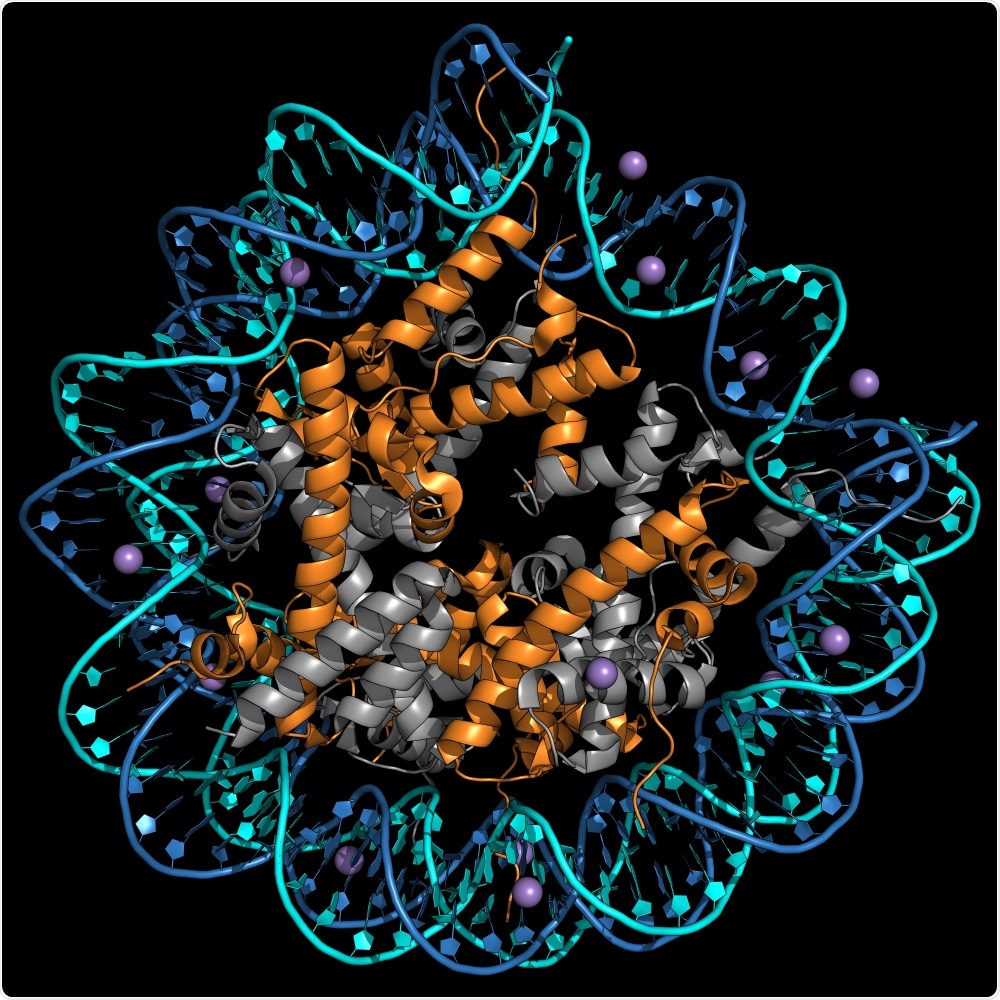The genetic material, DNA, of plants, animals, and humans is stored inside the cell, and DNA packing is guaranteed by proteins called histones.

Image Credit: MoleculeQuest/Shutterstock.com
Furthermore, histones play a key role in regulating the activation of gene expression and its timing: a given stimulus modifies a histone, making it allow or repress the expression of a gene.
The Cell Signaling laboratory at IRB Barcelona, led by Eulàlia de Nadal and Francesc Posas, has identified more than 200 regions (amino acids) in histones that, under cellular stress, undergo modifications to regulate the response to this condition.
Also, they have observed that stress of distinct nature, such as that caused by excess heat or salinity, leads to different histone modifications, thereby pointing to a "personalized" adaptation response to each type of stress.
The study has been carried out on the yeast Saccharomyces cerevisiae, a model organism widely used in biomedicine.
The histone modifications that regulate gene expression under normal conditions are being widely studied. However, little was known about the role of histones in responses to cellular stress, which have to be rapid and highly dynamic. Information about this role is important because the regulation of histones is associated with a wide range of diseases,"
Eulàlia de Nadal
Details about the modifications: heat and salt stress
Histones can undergo distinct modifications through the addition of different chemical groups. As well as identifying the key points of the amino acid sequence at which the modifications take place, the group of researchers has described in detail some of the modifications that occur in response to salt and heat stress.
They have provided details of the modification, how it occurs and how it influences gene regulation.
On the basis of these results, the laboratory is to develop two lines of research. On the one hand, the researchers will address other specific modifications that occur in response to stress.
And, on the other hand, to understand which mechanisms are relevant in different diseases, they will study how these modifications correlate with those that take place in human cells.
Journal reference:
Cristina Viéitez, Gerard Martínez-Cebrián, Carme Solé, René Böttcher, Clement M Potel, Mikhail M Savitski, Sara Onnebo, Marc Fabregat, Ali Shilatifard, Francesc Posas, Eulàlia de Nadal, A genetic analysis reveals novel histone residues required for transcriptional reprogramming upon stress
Nucleic Acids Research (2020) DOI: 10.1093/nar/gkaa081